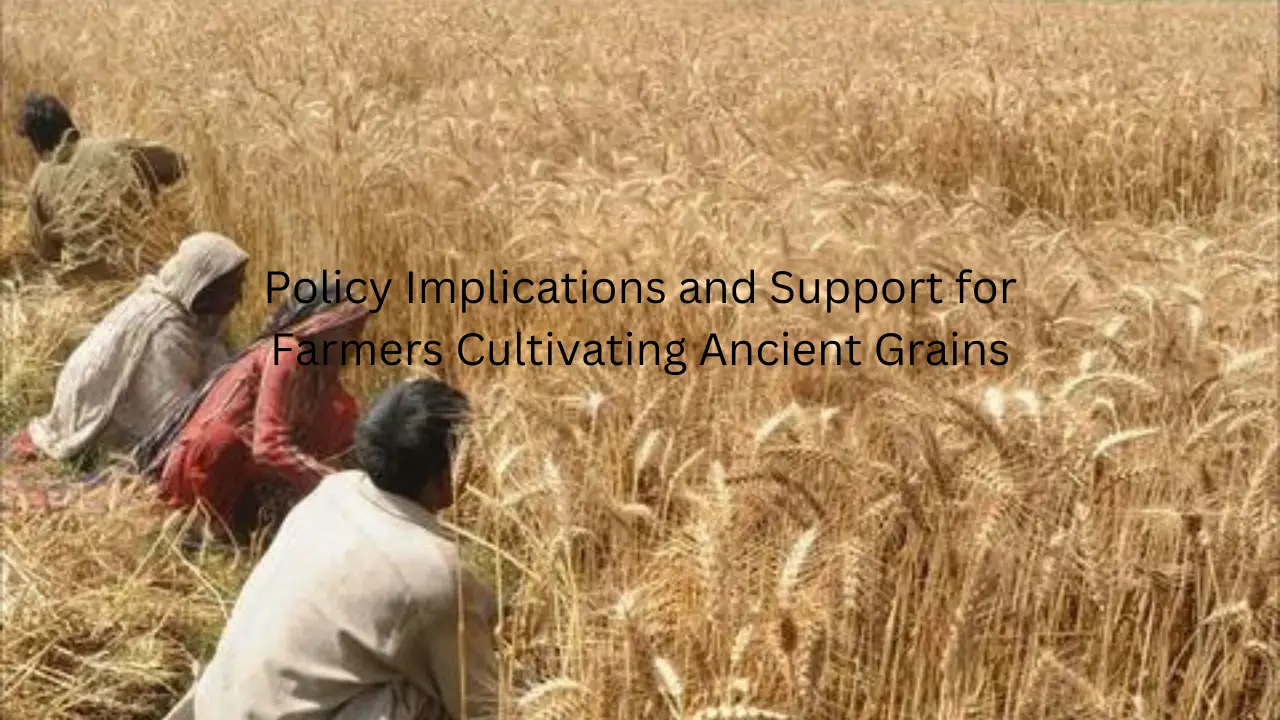
DFAGIE Fly Trap Indoor(1 Device + 5 Glue Cards), Plug-in Flying Insect Trap for Mosquito, Flies, Fruit Flies, Moths, Gnats, Gnat Trap for House Indoor, White
58% OffPolicy Implications and Support for Farmers Cultivating Ancient Grains
As the interest in sustainable agriculture and diverse diets continues to grow, there is a renewed focus on cultivating ancient grains. These grains, which have been consumed for centuries, offer unique nutritional benefits and environmental advantages. To encourage the cultivation of ancient grains and support farmers in this endeavor, policymakers are exploring various strategies and initiatives. In this article, we will explore the policy implications and potential support mechanisms for farmers engaged in cultivating ancient grains.
Introduction
Ancient grains, often revered for their nutritional value and resilience, are making a comeback in modern agriculture. Recognizing the importance of diversifying food sources and promoting sustainable farming practices, policymakers are exploring ways to facilitate the cultivation of these valuable crops.
The Revival of Ancient Grains
Ancient grains such as quinoa, amaranth, and millet are gaining popularity due to their high protein content, gluten-free nature, and ability to thrive in various growing conditions.
Environmental Benefits and Biodiversity
Ancient grains contribute to biodiversity by promoting crop rotation and reducing the need for chemical inputs. Their deep roots can improve soil health and water retention, enhancing overall ecosystem resilience.
Challenges Faced by Ancient Grain Farmers
Despite their advantages, ancient grain cultivation presents challenges like limited knowledge, access to markets, and lower yields compared to conventional crops.
Policy Implications for Supporting Ancient Grain Cultivation
To support farmers cultivating ancient grains, policymakers are considering a range of strategies:
Financial Incentives and Subsidies
Governments can provide financial incentives such as grants, subsidies, and tax breaks to encourage farmers to adopt ancient grain cultivation practices.
Research and Development Programs
Investing in research to develop high-yielding and disease-resistant ancient grain varieties can boost their commercial viability.
Market Access and Promotion
Creating direct market access and establishing value chains for ancient grains can help farmers connect with consumers who value their nutritional and environmental benefits.
Training and Education
Offering training programs on ancient grain cultivation techniques, organic farming, and sustainable practices can empower farmers to overcome challenges.
Collaboration with Indigenous Communities
Collaborating with indigenous communities can honor traditional knowledge about ancient grain cultivation while fostering sustainable agricultural practices.
Conclusion
The cultivation of ancient grains holds promise for sustainable agriculture, improved nutrition, and ecological resilience. By implementing supportive policies and mechanisms, governments can ensure that farmers have the necessary resources and incentives to embrace these valuable crops.
FAQs
1. Why are ancient grains important for sustainable agriculture?
Ancient grains promote biodiversity, reduce the need for chemical inputs, and contribute to soil health, making them a valuable component of sustainable farming systems.
2. How can financial incentives benefit farmers cultivating ancient grains?
Financial incentives like grants and subsidies can alleviate the initial costs of transitioning to ancient grain cultivation and encourage farmers to adopt sustainable practices.
3. Are there market opportunities for ancient grain farmers?
Yes, there is a growing demand for ancient grains due to their nutritional benefits. Farmers can tap into niche markets that value these grains for their uniqueness and health advantages.
4. How can policymakers promote knowledge-sharing among farmers?
Policymakers can support training and educational programs that provide farmers with the necessary skills and knowledge to successfully cultivate ancient grains.
5. Can ancient grain cultivation support rural communities?
Yes, the cultivation of ancient grains can provide economic opportunities for rural communities by diversifying agricultural activities and creating value-added products.











